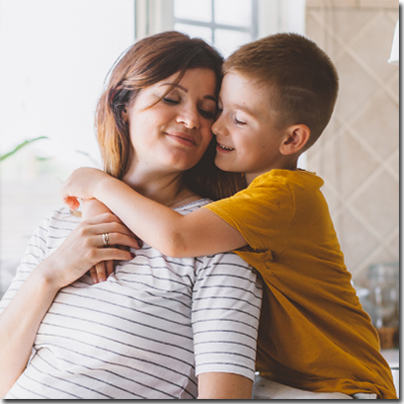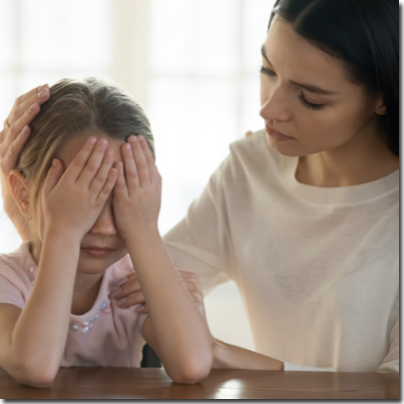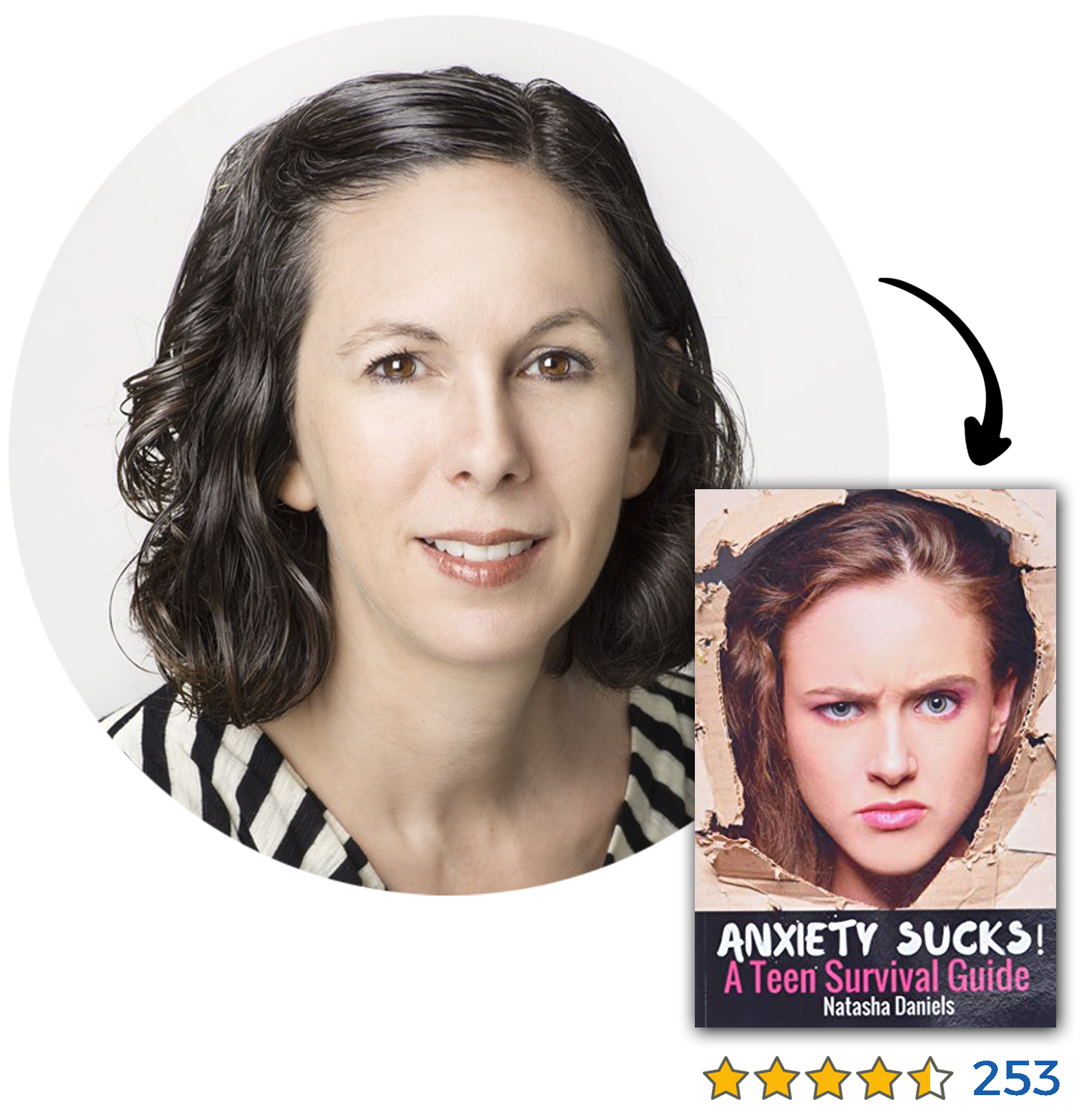 Making the commitment to positive parenting is not always as simple as we wish. During times of chaos, stress, and anxiety (for us or our kids), sticking with a positive parenting approach often needs to be a very conscious and deliberate choice. It doesn’t always come naturally!
Making the commitment to positive parenting is not always as simple as we wish. During times of chaos, stress, and anxiety (for us or our kids), sticking with a positive parenting approach often needs to be a very conscious and deliberate choice. It doesn’t always come naturally!
That’s why I’m looking forward to the Positive Parenting Conference this year- it’s an opportunity to tune up my skills, hone in on new ideas, and feel supported by the amazing experts involved. One such expert, Natasha Daniels, speaks of a topic near and dear to my own heart in her Understanding Anxiety in Teens Masterclass.
Natasha is a child anxiety and OCD therapist speaking to us on the ideas, tips, and tricks she writes about in her book Anxiety Sucks! A Teen Survival Guide. Natasha has been supporting children, teens and parents for years through private practice and through her writing with a direct, focused approach. The unique thing about Natasha’s book is that while parents will benefit from reading it, the targeted audience is our teenagers. The book is easy to follow; it breaks anxiety down in a simplistic and concrete way that teenagers will benefit from and understand.
As the parent of a child who struggles with anxiety, I appreciate Natasha’s straightforward attitude. As the editor for the AFineParent blog, I was lucky enough to get early access to this informative and insightful masterclass. Natasha will literally transform your entire mindset on anxiety in all its themed forms, from perfectionism to public speaking to social anxiety, in this masterclass.
I’m excited to share my top three takeaways with you here. Take a read and I’m sure you will be convinced that this is an absolute must-watch for all parents with teenagers!
#1: Our Language Has Power
 Natasha starts off the masterclass by quickly reminding us that anxiety in and of itself is a healthy and normal thing. We all feel anxious at times–nerves can actually produce better sensory acuity, increase speed and agility, and overall help us perform better. Anxiety disorders, on the other hand, are when worries impede our ability to function on a normal and recurring basis.
Natasha starts off the masterclass by quickly reminding us that anxiety in and of itself is a healthy and normal thing. We all feel anxious at times–nerves can actually produce better sensory acuity, increase speed and agility, and overall help us perform better. Anxiety disorders, on the other hand, are when worries impede our ability to function on a normal and recurring basis.
Natasha also reminds us that anxiety comes in many forms and themes. And, while anxiety does have genetic predispositions, having anxiety ourselves does not necessarily mean that our children will also have it–and our children having it does not necessarily mean that we also experience anxiety.
This is important for parents to remember because anxiety feels different to the person going through it as opposed to the person observing it–even if the person observing it also has their own form of anxiety! This is especially true for the physical symptoms that anxiety may produce as they are often what our children will complain to us about: the upset stomach, diarrhea, racing heart, dizziness, and sweaty palms. The pain of anxiety is identical to that of the flu, stomach bug, or heart condition, even if the origin is different.
Being mindful of the realness in which anxiety is felt allows us to be more empathetic and better able to validate what our child is feeling. The automatic response of “It’s just your anxiety,” may, on the surface, seem like a reassurance intended to help; but in reality, it may devalue what our child is feeling. Our language has power!
This was enlightening to hear as a parent of an almost teenager who struggles with anxiety. My personal experience has confirmed that telling my son that “it’s not a big deal” (it feels like one to him), “don’t worry about it” (he’d gladly not worry if he were able), or “it’s just a worry” (feels dismissive) is not going to make the anxiety he’s experiencing magically disappear. In fact, if you ask my son (which I have), he will tell you that those “reassuring” comments just make him feel unheard, invalidated and unprepared to deal with his worries.
Instead of dismissing worry, Natasha encourages parents and children to explore how anxiety works (does it start with that stomach ache before your mind even realizes you are anxious?) so that when the warning signs pop up (was that a “red thought” or a negative statement that your anxiety kicked into your mind?), our kids become practiced at naming the anxiety and we become practiced at responding in a way that is direct and validating.
Additionally, Natasha shares that assessing worries to determine the common themes behind a child’s anxiety can be helpful. For example, with a child who feels anxious when he has to present projects in class, answer questions in front of his peers, or perform a skill in front of others, those particular worries all feed into a core anxiety of being ostracized, judged, or rejected. When we can help our child identify specific fears and place them all under one umbrella, behaviors that come out of anxious feelings start to make more sense and are also then easier for our teenagers to self-identify.
#2: Externalizing the Anxiety
 I love how Natasha refers to her own worries in this masterclass. Not only does it make her very relatable and authentic, but her ideas around how to personify anxiety feel realistic and doable. Natasha explains that when we are dealing with anxiety that is dysfunctional and debilitating, reframing the anxiety in a way that externalizes it allows our children to feel more empowered to take it on.
I love how Natasha refers to her own worries in this masterclass. Not only does it make her very relatable and authentic, but her ideas around how to personify anxiety feel realistic and doable. Natasha explains that when we are dealing with anxiety that is dysfunctional and debilitating, reframing the anxiety in a way that externalizes it allows our children to feel more empowered to take it on.
Natasha shares that she often refers to anxiety as “the dictator,” explaining that between her own social anxiety disorder and raising kids with anxiety and OCD, anxiety dictates a lot of what she wants to do and what her kids want to do. Natasha encourages parents and teenagers to name their own anxiety as a way in which they can separate it from their identity and therefore protect their self-esteem in a manner that allows them to combat the anxiety.
When our children are able to externalize anxiety, they can begin thinking about it as a “thing” that knows them so well because it has lived in their minds their entire lives. It has spent it’s whole existence learning their brain and how to trick them with worries. Instead of anxiety being twisted up with our identity, it becomes something separate–a little dictator who is purposefully sending “mind bombs” (a red thought or negative cue for anxious feelings) to try to overwhelm them–and a dictator is something that they can talk back to!
For my son, his motivation for sports has come in handy with externalizing his anxiety. In the world of football, the game is all about the opposing team trying to intercept the ball or run a play to the ball around his team. My son is competitive, aggressive, and powerful on the field; he never just sits back to watch the other team overtake possession of the football when he’s playing in a game.
We have recently begun to refer to my son’s anxiety as a rival sports player. Rather than sitting back and allowing his rival to overtake his mind, he needs to grab the ball, push back, and force it to back down, much like what he does on the football field. Personifying anxiety as an opposing team player has allowed him to see the push back against it as something external rather than an internal battle.
#3: “Refocus” versus “Distraction”
 At the beginning of my family’s personal battle with anxiety, distraction was the number one go-to. Feeling anxious about the first day of school? Let’s load up the summer with fun activities so we never have time to talk about what’s coming. Worried about the baseball game? Jump on your phone and watch YouTube videos until the last possible second. Test at school tomorrow getting you anxious? Play video games until you’re about to fall asleep. At times, I was finding that the requests to do these things were often an indicator that my son was experiencing unspoken anxiety and was desperately trying to find a way to get his mind off of it.
At the beginning of my family’s personal battle with anxiety, distraction was the number one go-to. Feeling anxious about the first day of school? Let’s load up the summer with fun activities so we never have time to talk about what’s coming. Worried about the baseball game? Jump on your phone and watch YouTube videos until the last possible second. Test at school tomorrow getting you anxious? Play video games until you’re about to fall asleep. At times, I was finding that the requests to do these things were often an indicator that my son was experiencing unspoken anxiety and was desperately trying to find a way to get his mind off of it.
Natasha confirms that this is not an uncommon coping mechanism for individuals experiencing anxiety, but it is not a good stand-alone strategy because it means that our child is only avoiding the mind bomb, not learning how to deal with it. Instead, she encourages children to deal with their red thoughts by externalizing the anxiety, reframing their thinking about the red thought, and then refocusing their attention on something else.
Natasha gives an example of a child who is about to give a presentation in class and experiencing a mind bomb, telling him that he is going to fail the presentation. After dealing with his red thoughts and getting to the point in which he is able to say, “Even if I fail this presentation, I can bring up my grade somewhere else,” he then has the choice to let anxiety continue to throw red thoughts at him or refocus to something else (perhaps a peer’s presentation) so that the anxiety is drowned out.
Given that my son has anxiety around classroom presentations and school performance in general, this example feels very sensible. Natasha also goes on to acknowledge that when there is not something external to refocus on, we still have our brains to fall back on and can use imagery to refocus anxiety. She recommends that teenagers spend time when they are not anxious to create a world in their head- an imaginary land they can go to when they need to refocus from anxiety. We can encourage our teenagers to use all five senses to make-up this world- how does it feel, smell, taste, look, sound there?
I’m always looking for strategies to incorporate in empowering my son to push back against anxiety; if you are the same, the Anxiety in Teens Masterclass is definitely something you will want to tune into during the Positive Parenting Conference. I could have easily pulled several more key takeaways from this masterclass, as Natasha’s concrete and simplistic approach to helping parents and teenagers understand how anxiety works gives the confidence needed to believe that it can be overcome! I hope you will watch it!
 You can watch the full Anxiety in Teens Masterclass with Natasha Daniels for FREE during the online Positive Parenting Conference between May 17th – 24th, 2022. Each year 100,000+ parents join us for this amazing online event. Don’t miss it!
You can watch the full Anxiety in Teens Masterclass with Natasha Daniels for FREE during the online Positive Parenting Conference between May 17th – 24th, 2022. Each year 100,000+ parents join us for this amazing online event. Don’t miss it!
Up Next…
Do your kids love to roughhouse with you? Have you ever wondered if it is just silly play or if there are actually benefits to roughhousing with your children?
Join us next week as we discuss key takeaways from the Dive Into Roughhousing Masterclass with Dr. Larry Cohen.
This informative masterclass is packed with information about the positive benefits of roughhousing, how to use it to build connections, and even gives parents fun ideas for roughhousing games and activities. See you next week!
Leave a Reply